Learn to cook the lightest, fluffiest floater matzo balls ever! When it comes to the Jewish holiday of Passover, people tend to love one of two matzo ball textures – floaters or sinkers. My family’s personal preference is for delicate floaters, which are light, tender, and soak up soup broth like a sponge. In this post I’ll walk you through a few different techniques for making floater matzo balls that are light as air. I’ll also share my favorite way to make homemade matzo ball soup – the irresistible chicken soup that matzo balls are typically served with.
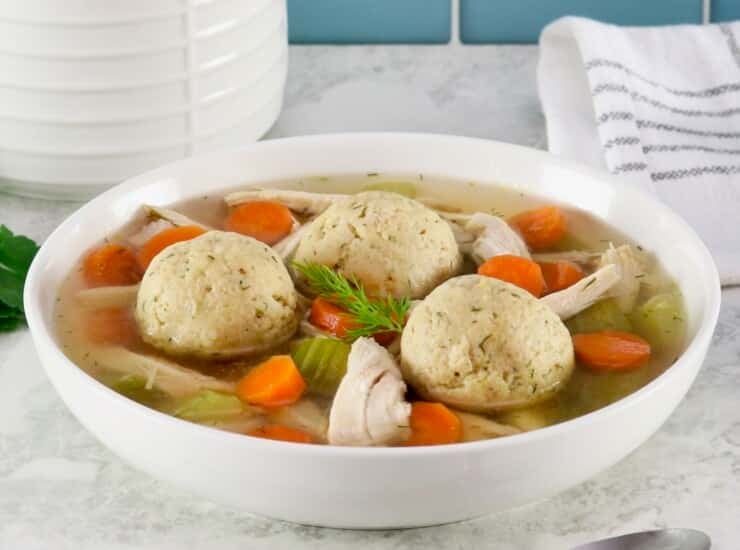
What is a matzo ball?
Matzo balls (sometimes spelled “matzah” or “matza”), are a traditional Jewish food that can be likened to a Kosher for Passover soup dumpling. In order to be considered kosher for passover, a recipe cannot contain any leavened grain. The leavened grains in this dumpling are replaced with matzo meal, then combined with eggs, water, fat, and any additional herbs or spices you may like.
Some home cooks prefer light and airy matzo balls, like my recipe below. Others enjoy a firmer, chewier texture, known as “sinkers” (because they sink in the pot). If you enjoy the latter, check out my sinker recipe. It produces a firm, pleasantly chewy texture with the same flavor profile as these floaters.
In my family, we prefer floaters. But how exactly do you make them?
How do you make light and fluffy matzo balls?
There are two ways to make light and airy floaters – use baking powder, or incorporate whipped egg whites with seltzer. Baking powder is the secret to really light floaters. However, some people don’t like to use baking powder during Passover. I’ve included instructions for both approaches in the recipe below – so if you don’t want to use baking powder, no problem.
But honestly, baking powder isn’t against Passover restrictions. Why? Read on!
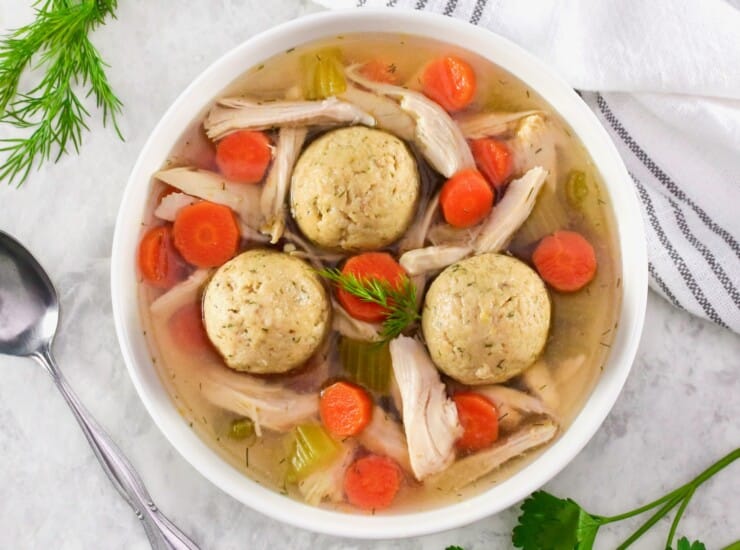
Can you use baking powder in matzo balls?
For many years, I used Manischewitz mix to make my matzo balls. One day, I studied the ingredients, and noticed sodium bicarbonate and monocalcium phosphate. These are the active ingredients in baking powder.
So, I started doing a little research. Turns out, baking powder is key to creating the fluffiest, lightest “floater” matzo balls. Using carbonated water or seltzer in combination with whipped egg whites will help get you fluffy floaters. But baking powder makes the biggest difference.
How could baking powder could be kosher for Passover? Baking powder is mineral based, not grain based. Consequently, it does not fall under the banner of “chametz,” the group of foods that are banned for Passover. This issue has been discussed at length on kosher websites across the web. Joan Nathan wrote an article about it for the New York Times in April 2006. In her article, Rabbi Moshe Elefant of the Orthodox Union’s kosher division, says: “There is nothing wrong about a raised product at Passover per se.” The Orthodox Union is the oldest and most widely accepted certifier of kosher foods.
If the OU doesn’t have a problem with certifying baking powder for Passover, neither do I. Actually, there are several brands of kosher for Passover baking powder. Some people choose not to use baking powder they feel it doesn’t jibe with the spirit of the Passover holiday. After all, it is an artificial, non-grain-based form of leavening. Others have no problem using baking powder, as long as it has a kosher hechsher. No judgement here, every family is different.
Suffice it to say, the choice to use baking powder is a matter of tradition and preference. One thing is for sure, it definitely makes for lighter, fluffier matzo balls. However, if you’re in the camp of folks that doesn’t want to use it, I’ve provided alternate instructions below.
Can you freeze matzo balls?
Matzo balls actually freeze well and retain their flavor and texture. Simply cool them to room temperature after cooking. Line a sheet tray with wax paper or plastic wrap, place the matzo balls on a sheet tray, and place in the freezer for 2 hours or so (until they get firm). Transfer to a freezer safe bag or container once frozen. When ready to serve, add them directly to your soup and reheat – no need to defrost.
If you need a delicious chicken soup recipe to serve with your matzo balls, check out my matzo ball soup recipe. It’s truly the best… my family asks for it year-round, whether or not it’s a Jewish holiday! I hope it becomes a favorite in your family, too.
Recommended Products:
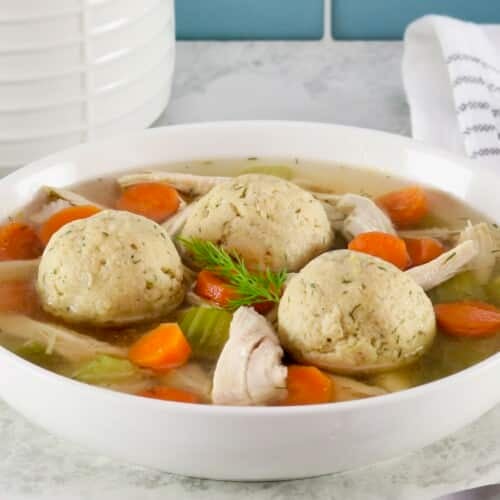
Floater Matzo Balls
Ingredients
- 1 cup matzo meal
- 1 teaspoon baking powder (optional for Passover – see notes below for details)
- 1/4 teaspoon sea salt, heaping
- 1/4 teaspoon garlic powder, heaping
- 1/4 teaspoon onion powder, heaping
- 1/4 teaspoon white pepper (optional)
- 4 large eggs
- 1/4 cup melted schmaltz, avocado oil, or safflower oil (use schmaltz for best flavor)
- 1/4 cup unflavored seltzer (only needed if not using the baking powder)
- 1 tablespoon minced fresh dill or parsley (optional)
- 5 quarts chicken stock (I highly recommend homemade chicken stock – none on hand? Check out the alternative method outlined below)
NOTES
Instructions
To Make Floater Matzo Balls With Baking Powder:
- In a medium mixing bowl, use a fork to stir together the matzo meal, baking powder, salt, garlic powder, onion powder, and white pepper.

- In another small mixing bowl, use another fork to mix together the eggs and schmaltz (or oil), stirring briskly to make sure they are well blended.

- Pour egg mixture into the dry ingredients, and add the minced dill or parsley. Mix all ingredients together with a fork until just combined. Do not over-mix.Put the bowl of matzo ball mixture into the refrigerator and let it rest for 30 minutes.

- Bring your 5 quarts of chicken stock (or saffron water stock outlined in Notes section) to a boil over medium heat.While your broth or water is warming, form the chilled matzo ball mixture into 1-inch balls (roughly walnut-sized). Don't overwork the mixture when you roll the balls.

- When your broth or water boils, reduce heat to a simmer and drop the matzo balls gently into the liquid.

- Cover the pot with a lid and let the balls cook for 30-50 minutes until fluffy and soft. Keep the pot covered– no peeking until at least 30 minutes have gone by! If you've followed instructions carefully, the balls should be floating on the surface of the water like billowy clouds of deliciousness. If they still seem dense or tight, they haven't cooked long enough. The should look soft and airy.

- Test for doneness by slicing a test matzo ball in half. It should look the same all the way through the center – tender, with no dark spot in the middle. If the middle is darker than the edges, it will need to simmer a little longer – it's not quite cooked yet. Don't be afraid to cook longer if it seems dense in the center, as it really won't be light and fluffy unless it is fully saturated with broth and cooked all the way to the center.

To Make Floater Matzo Balls Without Baking Powder:
- If you're not using baking powder, you may want to use avocado or safflower oil instead of schmaltz. Both of these oils will yield a fluffy result, though they are not as flavorful as schmaltz. Schmaltz tends to make the matzo balls a little heavier, but it's really flavorful.Separate the egg whites from the yolks, putting the whites in one of the medium mixing bowls and the yolks in the small mixing bowl. Use a fork to stir together the egg yolks and oil (or schmaltz), stirring briskly to make sure they are well blended. Gently stir in 1/4 cup of bubbly unflavored seltzer.

- In the second medium mixing bowl, use a fork to mix together the matzo meal, salt, garlic powder, onion powder, and white pepper.

- Pour egg yolk mixture into the dry ingredients, and add the minced dill or parsley. Mix with a fork until just combined. Do not over-mix.

- Whip the egg whites with an electric mixer to stiff peaks.

- Fold the whipped egg whites into the batter. Do not over-mix; you want the egg whites well integrated, but over-mixing will deflate them.Put the bowl of matzo ball mixture into the refrigerator and let it rest for 30 minutes.

- Bring your 5 quarts of chicken stock (or saffron water stock outlined in Notes section) to a boil over medium heat.While your broth or water is warming, form the chilled matzo ball mixture into 1-inch balls (roughly walnut-sized). Don't overwork the mixture when you roll the balls.

- When your broth or water boils, reduce heat to a simmer and drop the matzo balls gently into the liquid.

- Cover the pot with a lid and let the balls cook for 30-50 minutes until fluffy and soft. Keep the pot covered– no peeking until at least 30 minutes have gone by! If you've followed instructions carefully, the balls should be floating on the surface of the water like billowy clouds of deliciousness. If they seem dense, they need to cook longer. Note that after you open the lid the first time, the matzo balls may sink to the bottom of the pot. That doesn't mean you've failed to make floaters – it just happens when the lid comes off.

- Test for doneness by slicing a test matzo ball in half. It should look the same all the way through the center – tender, with no dark spot in the middle. If the middle is darker than the edges, it will need to simmer a little longer – it's not quite cooked yet. If you formed your balls any larger than the recommended size, you may need 10-15 minutes (or longer) than the suggested cooking time. Go by texture and doneness. It won't be light and fluffy unless it is fully saturated with broth and cooked all the way to the center.

- Serve two or three matzo balls per bowl with hot chicken soup ladled over them. If you don’t plan on serving the whole pot of soup at one sitting, make sure you remove the matzo balls from the broth and let them come to room temperature before storing them in a separate sealed container in the refrigerator. If left to sit in the broth, they'll become mushy.

How to Freeze Matzo Balls
- Once your matzo balls are fully cooked, line a baking sheet with wax paper or plastic wrap. Use a slotted spoon to remove the matzo balls from their cooking liquid and place them gently on the lined sheet. Let cool to room temperature.

- Place the matzo balls in the freezer and let them freeze until they are firm to the touch, around 2 hours or so. Once they are firm, you can place the matzo balls into a freezer bag (I use reusable silicone freezer bags).

- Label them with a label maker, if you want, so it will be easier to remember what you have on hand in future. They can be thawed and reheated directly in hot soup (or a pot of soup stock) just before serving.

- Additional Notes: You can cook matzo balls directly in your soup broth (which will give them excellent flavor), but it will soak up a lot of the yummy stock, leaving you with very little broth for serving.

Nutrition

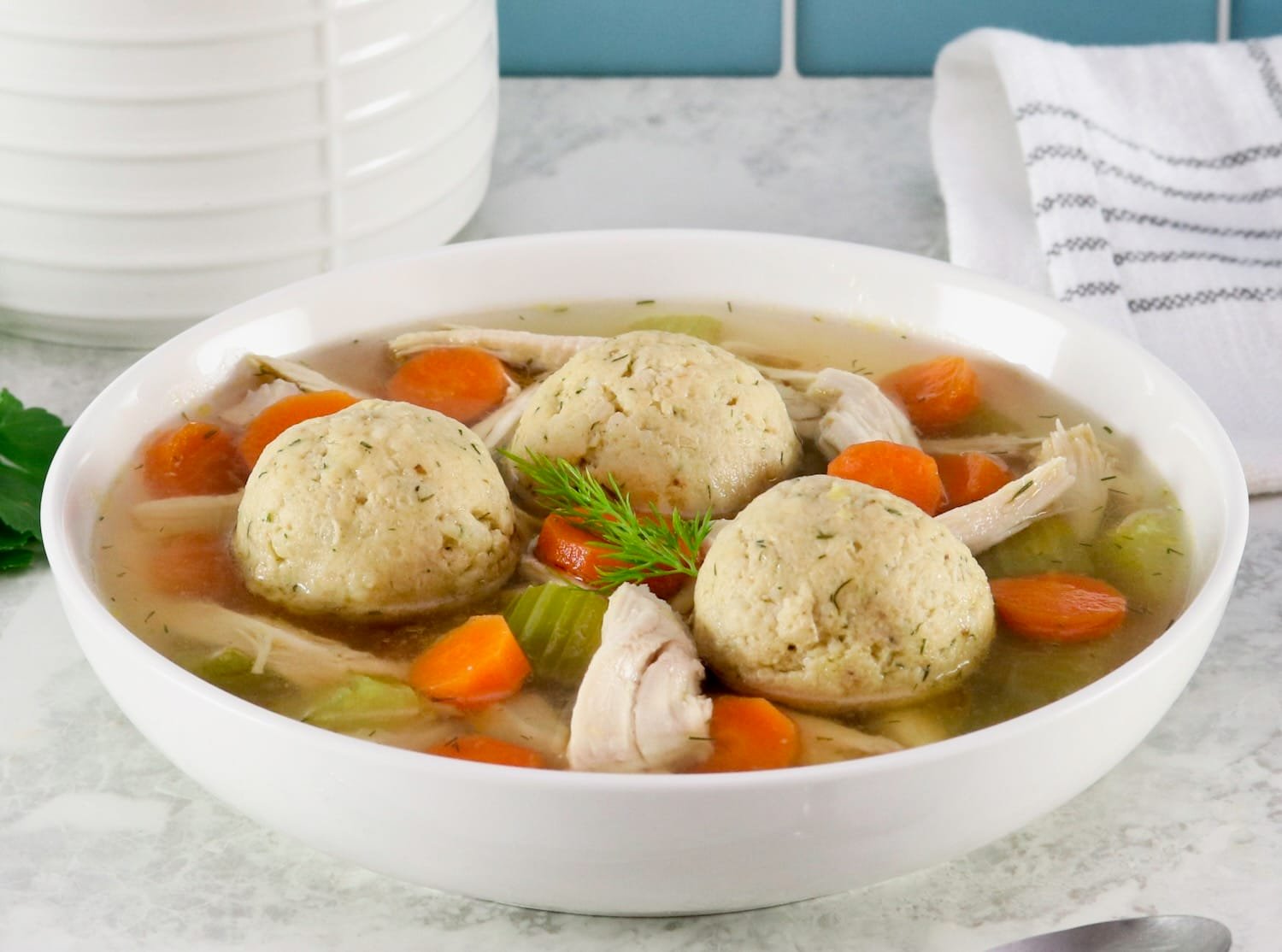
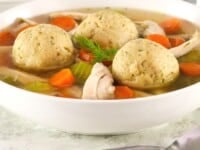
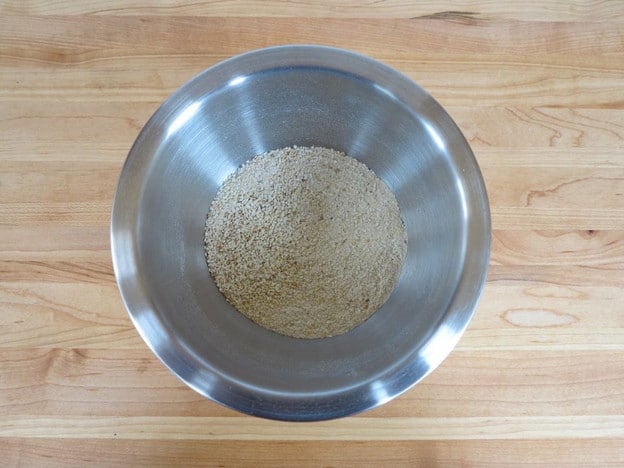
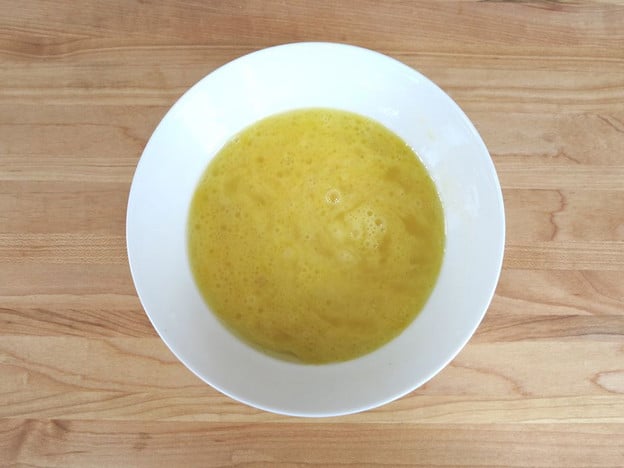
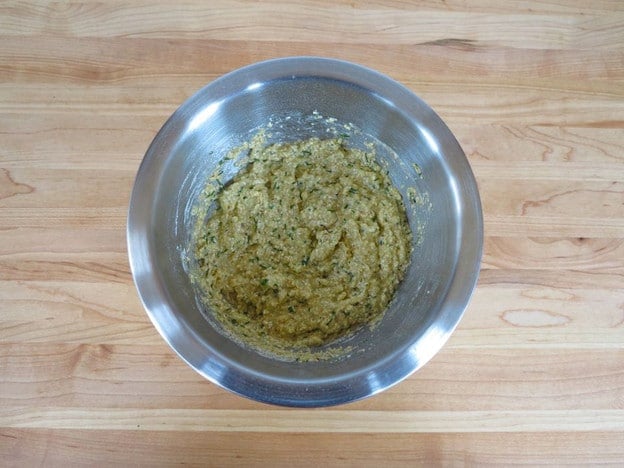
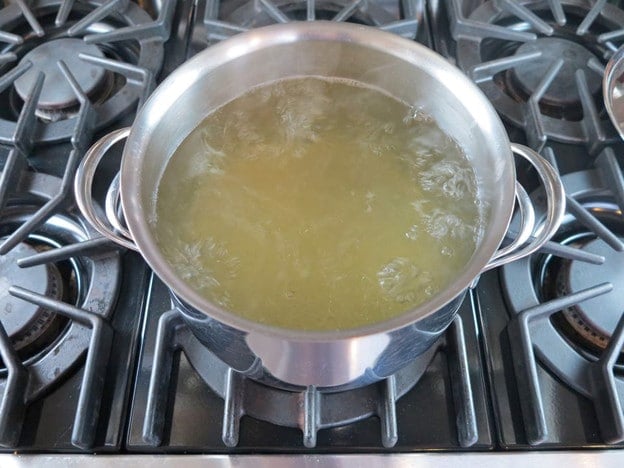
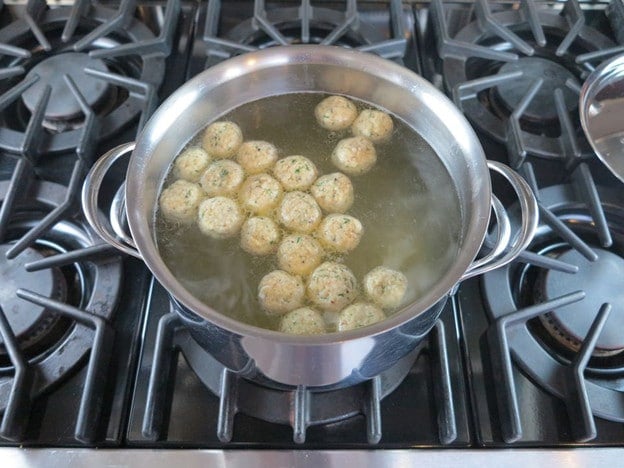
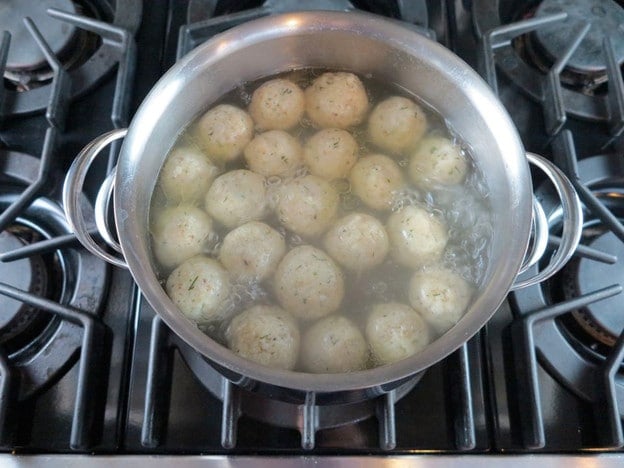
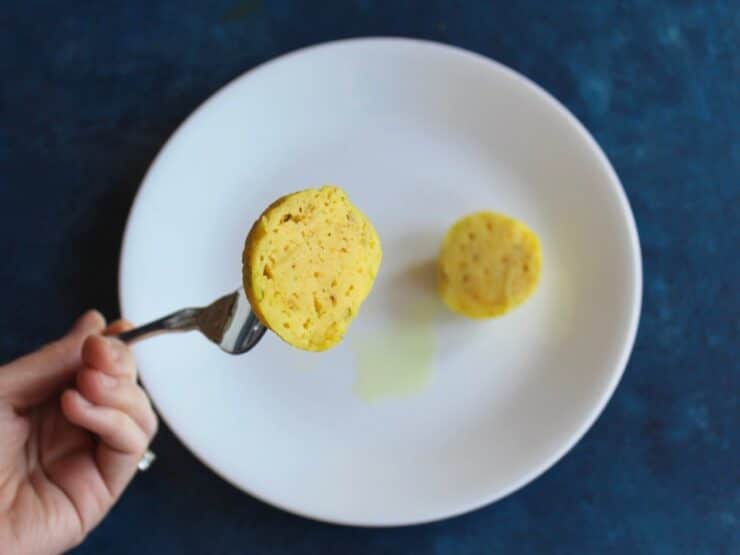
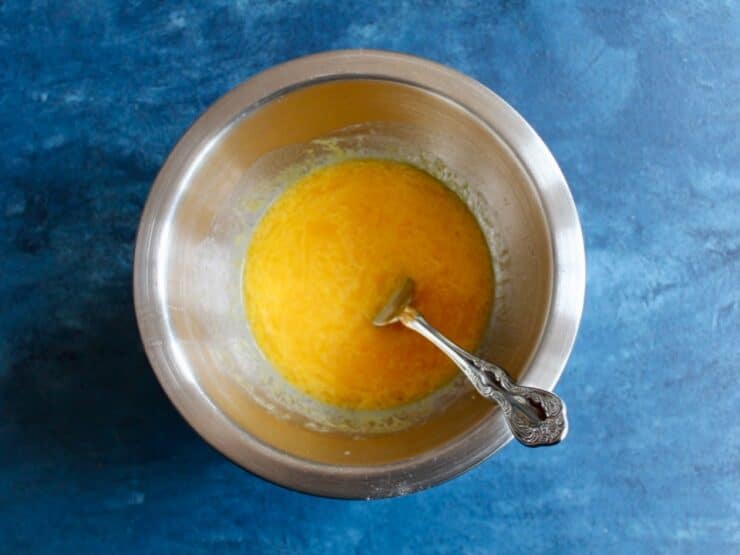
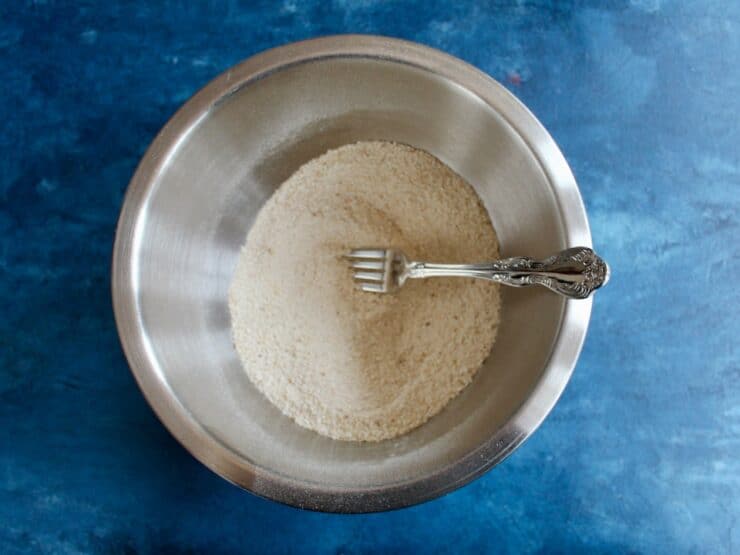
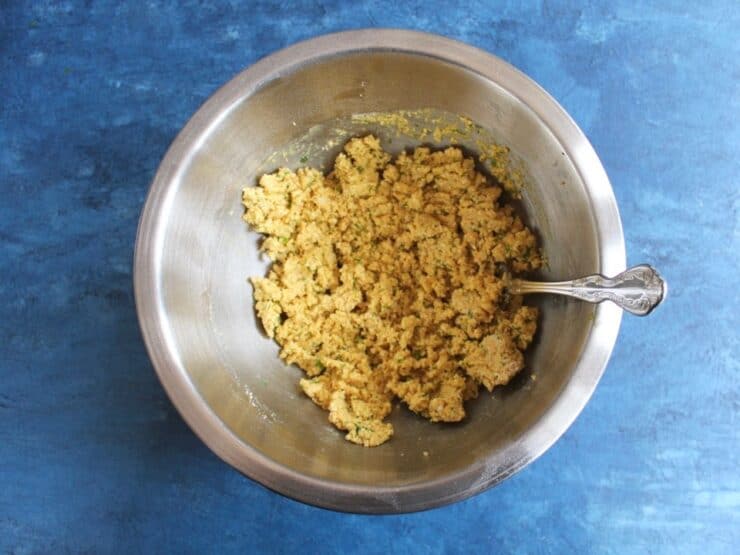
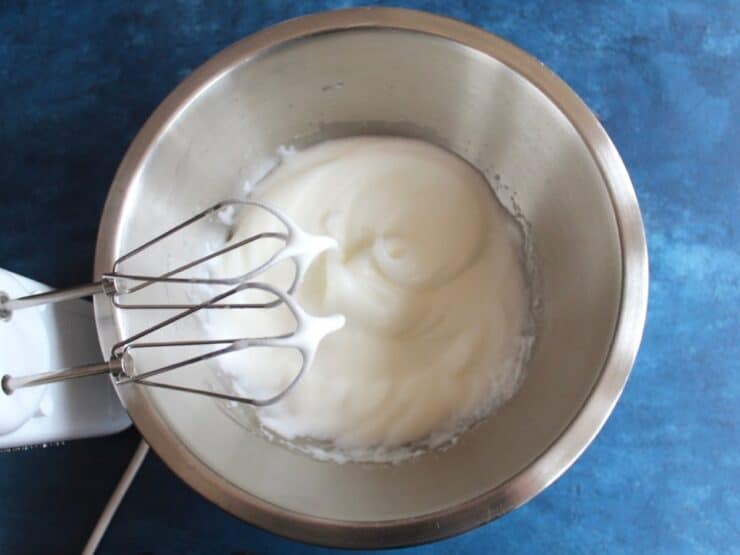
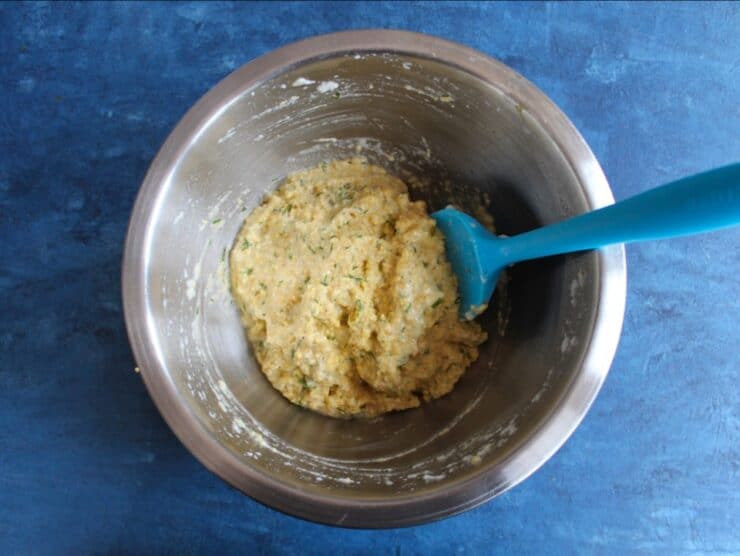
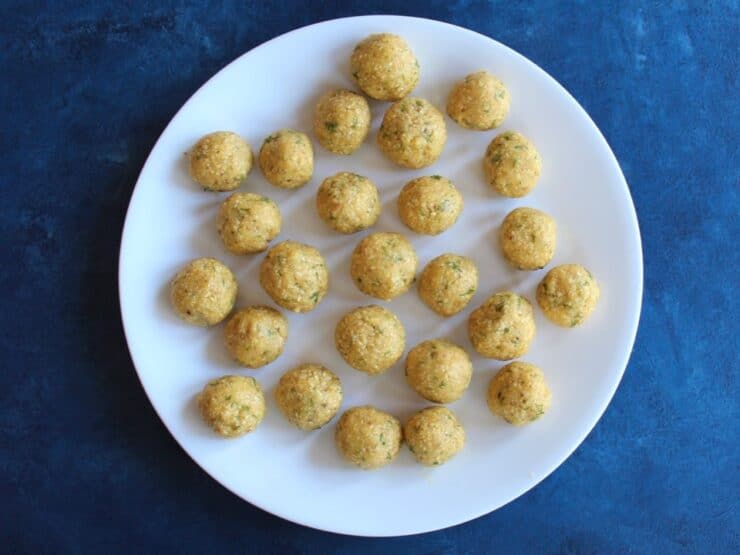
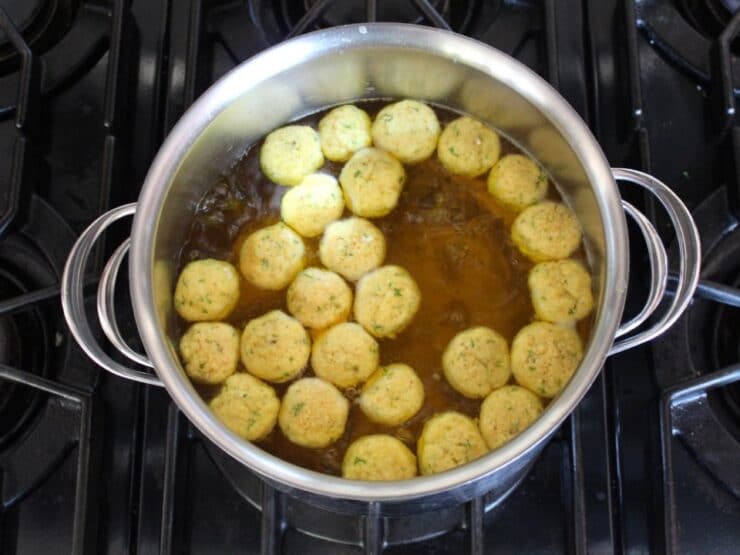
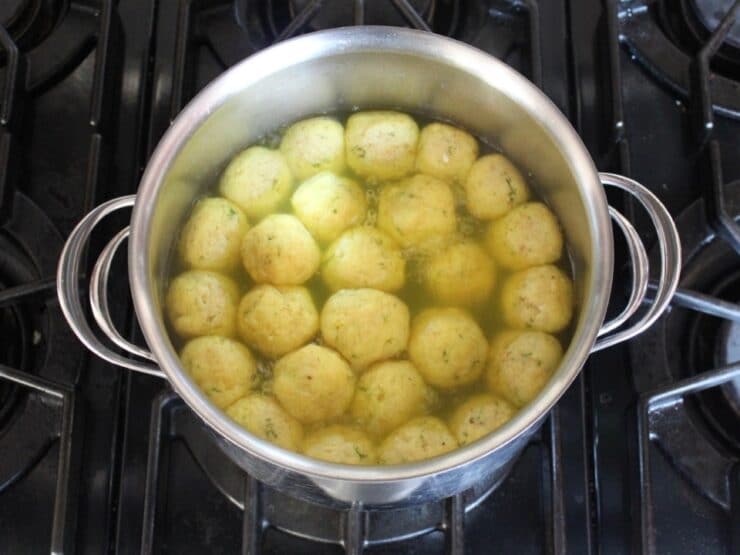

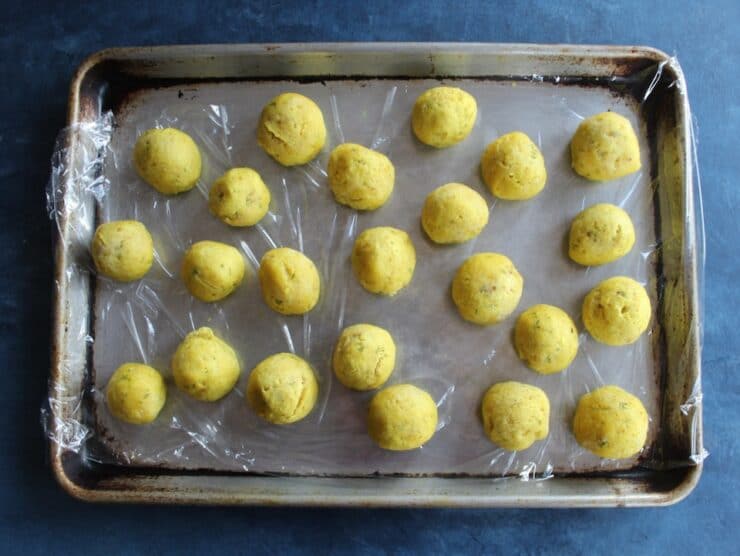

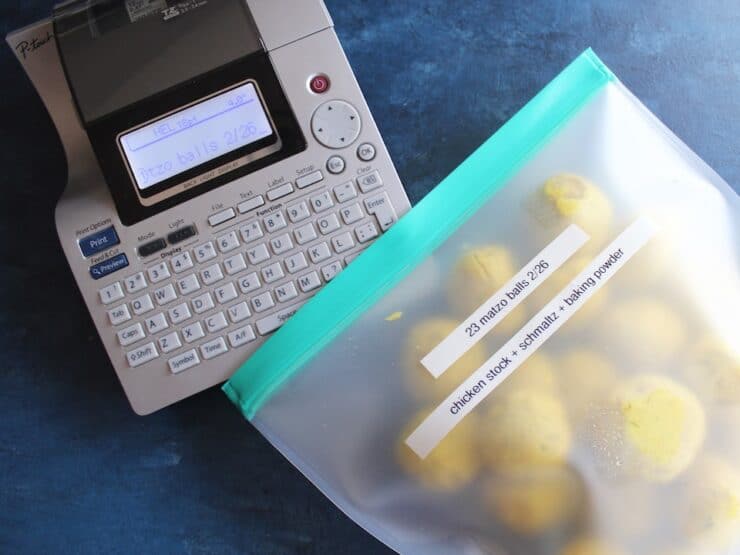


I make my own chicken stock all the time, but this was my first time making matzo balls. I picked this (baking powder) recipe because it looks easy enough and it was! These are great! 30 minutes and they are just perfect. The wife will want these all the time now.
I Love This recipe! My husband is Ashkanazi and it is really
important to me to make, “authentic” dishes from his childhood. I made this during Passover as a surprise, for our children and him. His response? “This soup and these matzo balls, remind me of the ones my Nana Rae, used to make”.
My husband adored his, “Nana Rae”, so this was High Praise, indeed!
Thank you so very much!
Wow, Nana-level praise! Thanks for sharing, that made my day!!
I would like to make this recipe asap, looks amazing!
But I have a box of Manischewitz Matzo Ball Mix. Rather than waste it, do you have a recommended way of making the balls using the mix? Follow the recipe on the back of the box? Use your recipe but account for the fact I have a mix and not the matzo meal? Would appreciate any recommendations. This is all new to me!
The best matzo ball soup recipe I’ve ever made. Everyone at the table raves about it at Passover and asks for the recipe. I used the baking powder version.
Hi Tori
I usually use the Eskal box for matzah balls but recently it has not been available.
In Australia we get coarse, fine and super fine matzo meal….
Which is the best to use for your recipe?
I would use coarse ground for best results with this recipe.
Where can I get matzo meal for my matzo balls as I don’t live in a Jewish area I live in Scarborough UK.
Loved this recipe, the floaters were the best I ever had. I usually buy the manoshevitz mix but never again. This was easy and very delicious.
Over the years I strived for floaters but often got sinkers. Never met a Matzo ball I didn’t like. Whenever they exploded on me I just treated it like an Egg Flower soup 🤗 Your recipe reminded me of how I made it right. I’m 64 male, not Jewish but I’ve made it for 30 yrs in good and bad times. When your sick or sad, Matzo Ball soup will make you glad
Thank you Tori
Ha! Glad you enjoyed it John.
i am reasonably new to the cooking thing. like to eat though, lol i find the recipies easy to read, yummmy thank you so much. Ryan
My first batch were so hard, I searched for a recipe for light matzah balls and they came out perfectly! I kept lid on pot for an hour without peeking.
SO NOT floaters …. I’ve been making matzoh balls for years using Mimi Sheraton’s amazing book From My Mother’s Kitchen and for some reason (here I fault myself) I decided to branch out this year. NEVER AGAIN!! These are heavy and not even that tasty. Total thumbs down.
Terry, I’m sorry these didn’t work out for you… they’ve been a hit for many readers through the years, and I make them every year multiple times in my own kitchen. I can’t help thinking you made a mistake somewhere. Regardless, it’s a bummer when something doesn’t work out as expected… better luck next time!
I’ve successfully made your floater and sinker recipes, and enjoyed the results of both.
Here’s my method of ensuring uniform-sized matzo balls: When the mixture is chilled, remove it from the fridge and turn it out onto a lightly-oiled surface. Shape it into a square or rectangle, then divide/cut it into equal-width strips vertically and horizontally. From there it’s easy to take each section and roll it into a ball.
I prefer 2″-diameter matzo balls, but (as we say in Hebrew) על טעם וריח אין להתווכח (“there’s no arguing about taste and smell”)
Best matzoh balls ever! I made schmaltz by cooking skins in the airfryer. They were so light and tender. Moving from NY to NC, I needed to make this at home and your recipe did not disappoint.
I had the most difficult time following this recipe. The way that it was laid out was impossible to follow, the fact that you didn’t write in the ingredients section to separate the eggs was confusing and I missed that step completely. The matzo balls exploded upon hitting the stock and the whole thing had to be thrown away. A waste of my time and my beautiful smelts , that took days to make. Very disappointed and frustrated.
I’m sorry you didn’t have luck with this recipe, Liz. Due to holiday tradition, some people choose to use baking powder, while others prefer separating the eggs… that’s why the recipe clearly has instructions for each different method under two separate headings. That said, it is always disappointing when a recipe doesn’t work out the way you intended, and I understand your frustration!
Thank for your attention to detail in your recipes! I just made the B.Powder Matzoh balls following your instructions to a “T” and they are great! I trust all your recipes to work as you describe. So I dared to put these guys into the freezer and take them out just in time to put on the Seder in a couple of days.
I agree with the comment below that you should publish your own cookbook(s)!
Cheers,
Helen
Fabulous Helen! So glad you liked this one.
This is the only matzoh ball recipe I use now! Could never before replicate the fluffy matzoh balls I knew and loved from growing up until I tried Tori’s recipe. I use the baking powder version and it always works perfectly.
Yay! Happy to hear that.
I like my matzo balls big, so this made 4 large balls, which were fantastic after simmering 50 mins. Never knew about the secret ingredient of baking powder, and this seems to be the answer! I’ve used the box mix in the past and they never turn out well. But this recipe really did me right! YUMMY…now I need a nap! 😉
OMG! TORI! What a wonderful recipe. My mother-in-law is crazy for matzoh ball soup, and when we called her to dinner we did not tell her that I made her favorite, and she practical danced, not inly at the sight, but at the flavor. I used the baking powder recipe, and achieved the pillowy perfection promised. I love your recipes because they are so honest and compassionate toward the cook, and as a professional psychologist I can vouch for the positive effect this can have. This is our recipe for matzo balls going forward.
Mark, first of all thank you for writing, and I appreciate so much that you noticed the care that goes into crafting these recipes! I really do try hard to break it down and make them easy and accessible for all. The fact that you noticed that means the world to me! Also… glad you loved the matzo balls!!